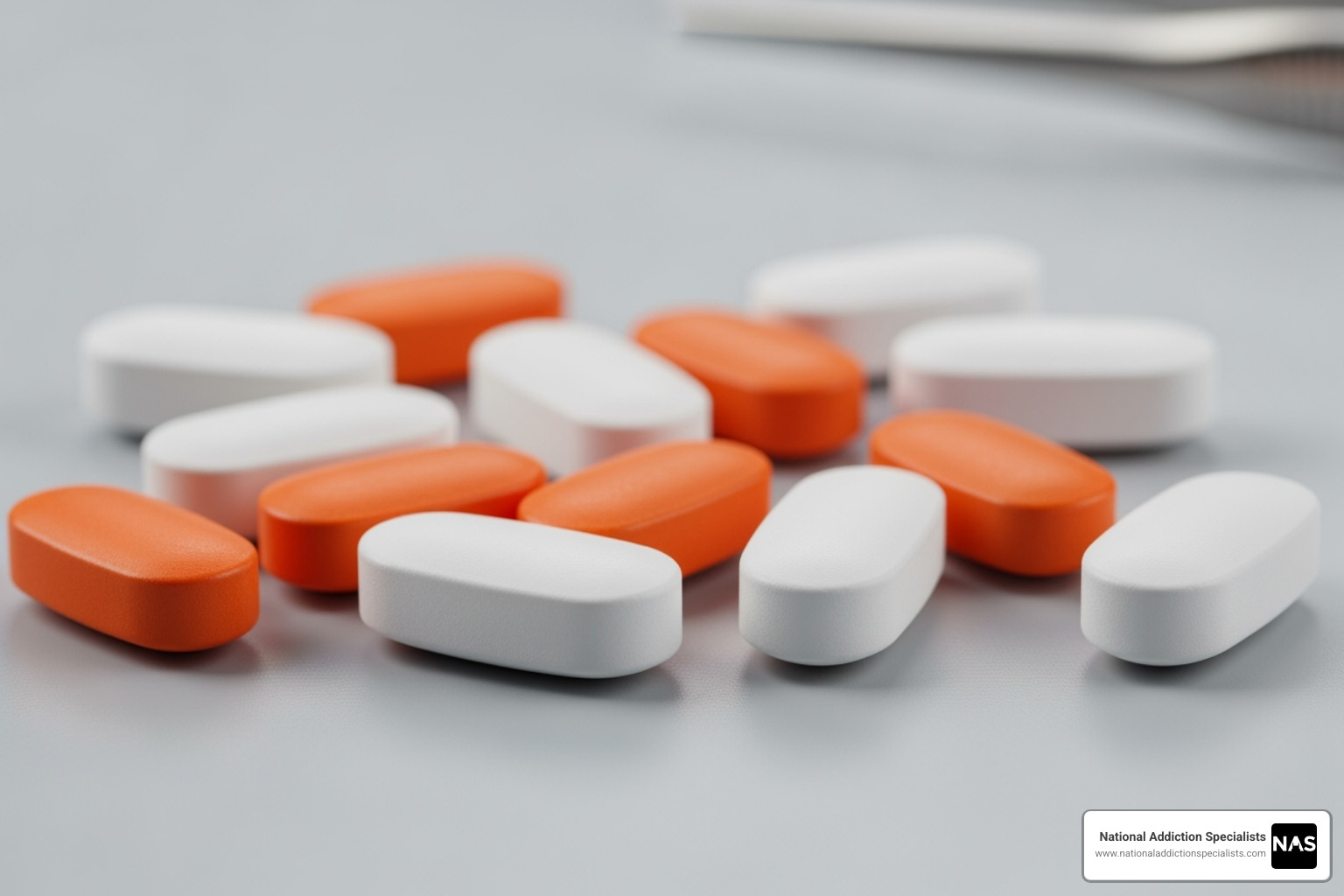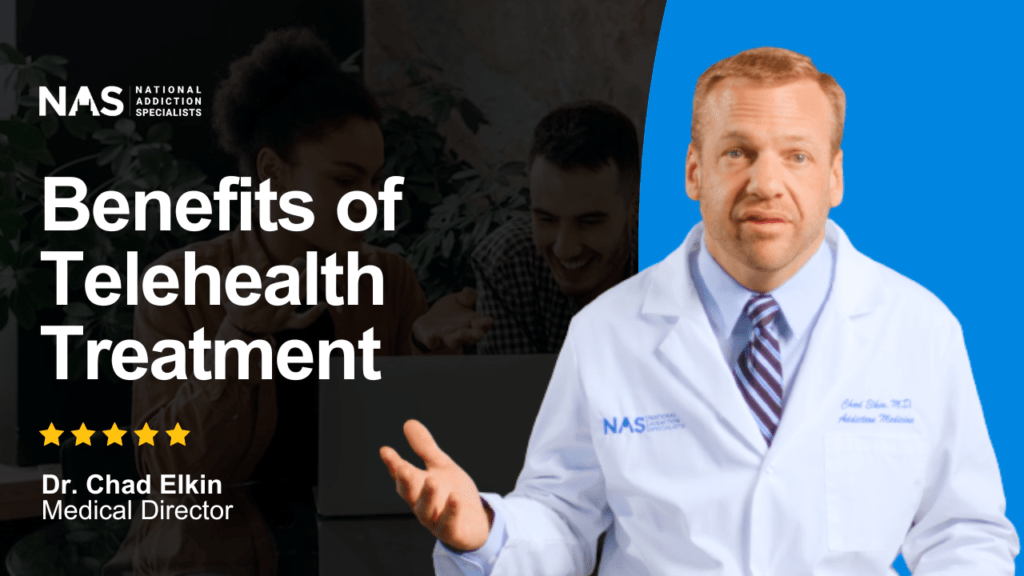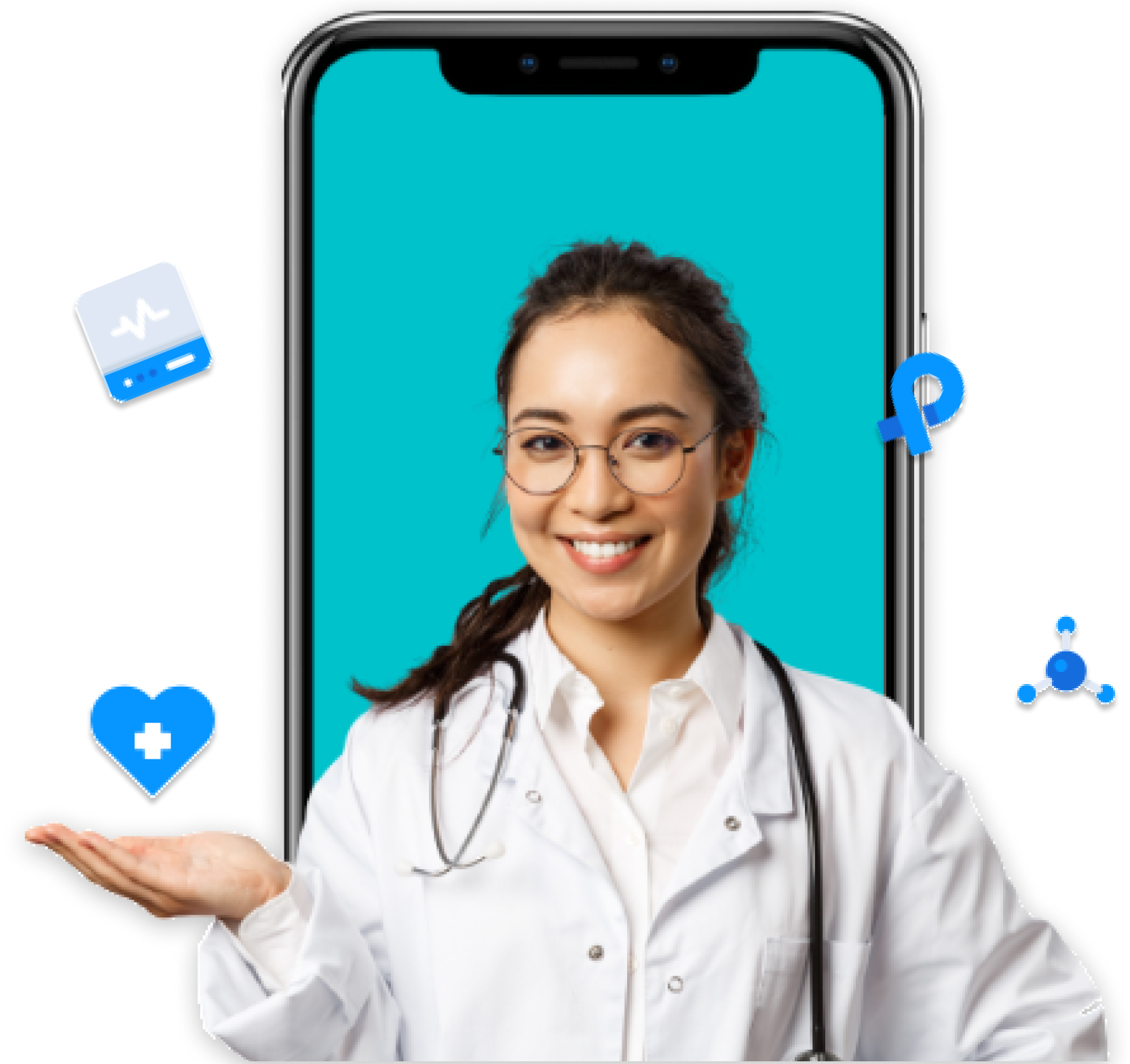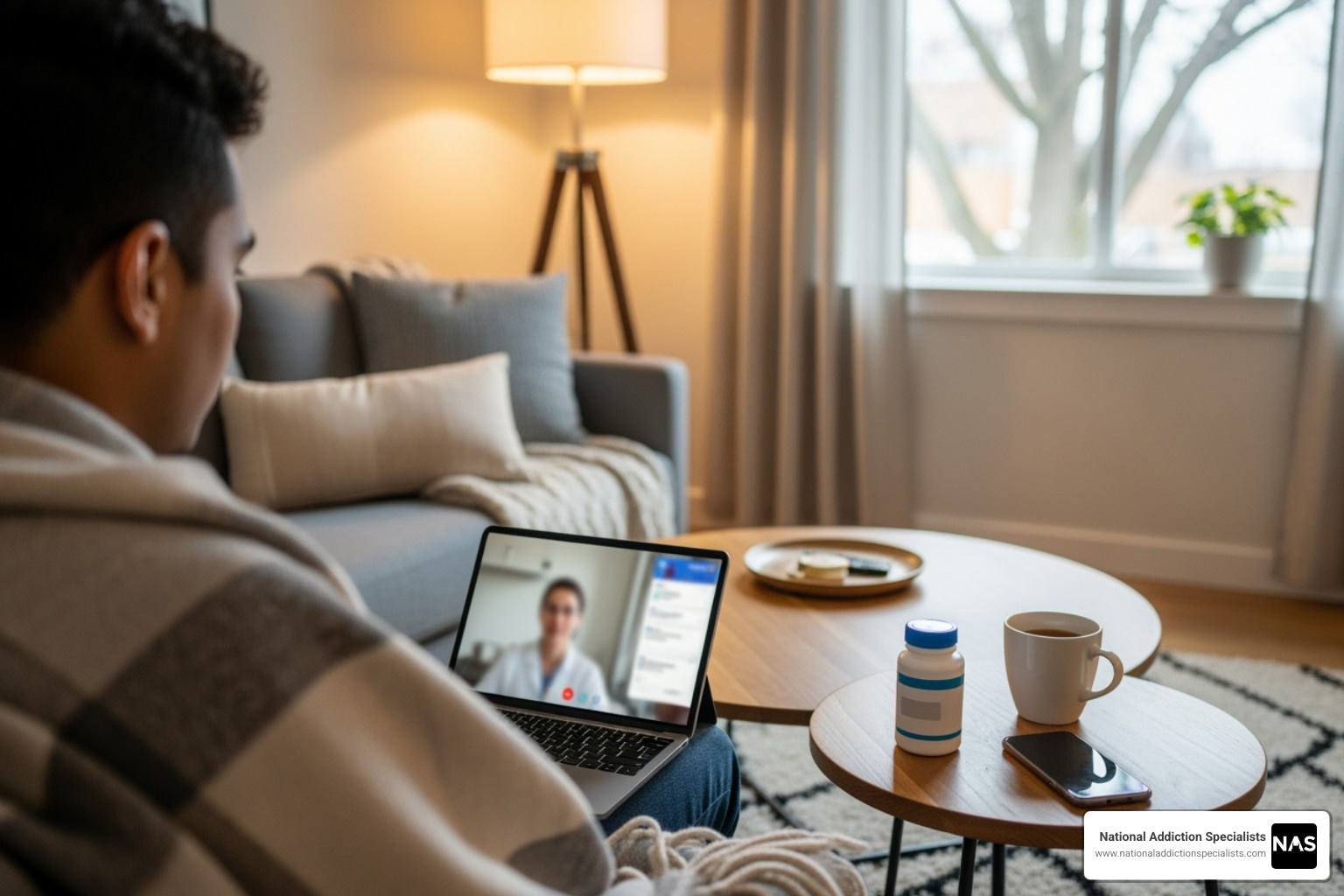Understanding Hydrocodone Dependence and the Path to Freedom
The best way to get off hydrocodone involves three key steps:
- Professional medical consultation – Get a personalized assessment and safe tapering plan
- Gradual dose reduction – Taper by 10-25% every 2-4 weeks to minimize withdrawal
- Medication-Assisted Treatment (MAT) – Use medications like Suboxone to ease withdrawal and reduce cravings
Hydrocodone is America’s most commonly prescribed and most frequently abused opioid medication. Found in brand names like Vicodin and Norco, this powerful painkiller was designed to treat moderate to severe pain. But what starts as legitimate pain management can quickly become physical dependence.
Physical dependence develops when your brain adapts to the presence of hydrocodone. Over time, your body needs the drug just to feel normal. This isn’t a moral failing – it’s a predictable biological response that can happen to anyone, even when taking medication exactly as prescribed.
The decision to quit hydrocodone is brave, but it’s not one you should face alone. The FDA has issued specific warnings about the serious harm that can result from suddenly stopping opioid medications. Medical supervision is critical because withdrawal can cause dangerous complications like severe dehydration, uncontrolled pain, and psychological distress that may lead to suicidal thoughts.
I’m Chad Elkin, a board-certified addiction medicine physician and founder of National Addiction Specialists, and I’ve helped thousands of patients find the best way to get off hydrocodone safely through evidence-based treatment. My experience treating substance use disorders has shown me that recovery is absolutely possible when you have the right medical support and a personalized plan.
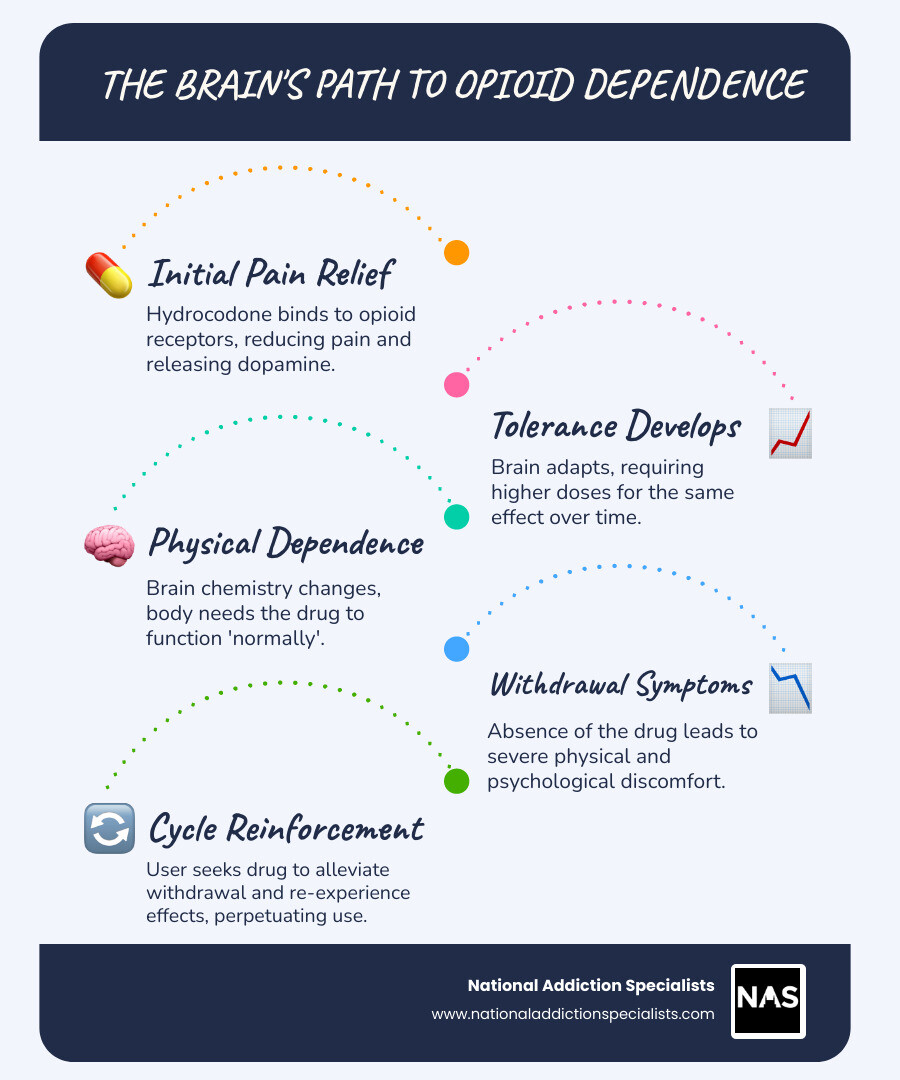
Quick best way to get off hydrocodone terms:
The Risks of Quitting “Cold Turkey”
When you’re desperate to break free from hydrocodone, stopping completely might seem like the fastest path. But quitting “cold turkey” is one of the most dangerous approaches. Understanding why shows why the best way to get off hydrocodone always involves medical guidance.
Severe withdrawal symptoms hit fast and hard when you suddenly stop hydrocodone. Your brain is used to the medication, and its sudden absence sends your nervous system into panic mode.
These aren’t just uncomfortable symptoms. Uncontrolled pain often returns worse than before. Your body may have developed opioid-induced hyperalgesia, making you more sensitive to pain.
Psychological distress can be overwhelming. Anxiety, depression, and irritability can become dangerous. Some people experience thoughts of self-harm, which is why professional support is potentially life-saving.
Dehydration is a serious medical concern when severe vomiting and diarrhea won’t stop. Losing essential fluids and electrolytes can land you in the emergency room.
The FDA has issued specific warnings about abruptly stopping opioid medications. They’ve seen patients suffer serious harm or turn to dangerous street drugs when they couldn’t handle the withdrawal. You can read their official FDA warning on abrupt discontinuation to understand the risks.
Perhaps the scariest part is the high risk of relapse and overdose. When you quit cold turkey, your tolerance drops. If you relapse and take your previous dose, you could accidentally overdose. This is often preventable with the right medical approach.
The good news? There’s a much safer path forward that doesn’t involve white-knuckling through dangerous withdrawal symptoms.
The Best Way to Get Off Hydrocodone: A Medically Guided Plan
Finding freedom from hydrocodone doesn’t have to be a scary journey. The best way to get off hydrocodone is a carefully planned, medically supervised approach that puts your safety and comfort first. This three-step process helps people successfully break free from opioid dependence while minimizing the risks and discomfort of withdrawal.

Step 1: Professional Consultation is Key
Your recovery journey begins with an honest conversation with a healthcare provider who understands opioid dependence.
During your personalized assessment, we’ll discuss your unique situation: how long you’ve been taking hydrocodone, your dose, and other health conditions. These details matter because everyone’s path is different. We’ll also discuss your treatment goals together. Whether you want to quit completely or are concerned about managing chronic pain, your goals are valid and important.
Creating a safe plan means looking at your whole life—your work, family, and support system—to ensure it fits your reality. Honesty with your provider is crucial. There’s no judgment here. The more open you are about your use, fears, and goals, the better we can help you succeed.
Step 2: Gradual Tapering to Safely Wean Your Body
Tapering is like slowly turning down the volume instead of hitting the off button. Tapering means gradually reducing your hydrocodone dose over time, giving your body a chance to adjust without going into shock.
The beauty of tapering is how it minimizes withdrawal symptoms, making the process much more manageable. The Mayo Clinic provides excellent guidance on this process, which you can explore in their guide to tapering off opioids. Generally, we recommend reducing your dose by 10-25% every 2-4 weeks. Slow and steady wins this race.
How your dose and duration affect your taper is important. Someone who has used hydrocodone for months or years will need a more careful, patient taper than someone who has used it for a few weeks. Your tapering schedule isn’t set in stone; we adjust it by listening to your body.
Step 3: Using Medication-Assisted Treatment (MAT) for a Smoother Detox
Medication-Assisted Treatment (MAT) makes the journey safer and more manageable.
How MAT works is clever. Medications like buprenorphine (found in Suboxone) attach to the same brain receptors as hydrocodone. They satisfy your brain’s need for an opioid without giving you the dangerous high.
What is Suboxone? It’s a combination medication where buprenorphine helps manage withdrawal and cravings, while naloxone prevents misuse. It provides stability while you learn to balance on your own.
MAT is highly effective at reducing cravings and easing withdrawal symptoms. Instead of white-knuckling through discomfort, you can focus on building the skills you need for long-term recovery. The Substance Abuse and Mental Health Services Administration provides comprehensive information about Medication-Assisted Treatment (MAT) and its effectiveness.
The best part? You can start MAT from home through telemedicine. No waiting rooms or judgment, just professional care delivered with compassion.
Make an Appointment to Treat Addiction
Please don’t hesitate. Make an appointment today.
Navigating Hydrocodone Withdrawal: Symptoms and Timeline
Even with medical supervision, understanding what withdrawal feels like can help you feel more prepared and less anxious about following the best way to get off hydrocodone.

Common Hydrocodone Withdrawal Symptoms
Hydrocodone withdrawal often feels like a severe flu with an intense emotional component. Your body is used to the drug, and it takes time to rebalance.
Symptoms appear in waves. Early symptoms (starting 6-12 hours after the last dose) include anxiety, restlessness, muscle aches, insomnia, increased tearing, runny nose, sweating, and chills.
The late symptoms phase (peaking at 24-96 hours) is often the most uncomfortable. It can include severe abdominal cramping, diarrhea, nausea, and vomiting. You might also notice dilated pupils and goosebumps.
The psychological side is also challenging. Intense cravings, depression, irritability, and mood swings are normal. These symptoms are temporary and much more manageable with proper medical support. For more details, see our guide on Opioid Withdrawal Symptoms.
A Typical Withdrawal Timeline
While everyone’s experience is unique, withdrawal follows a predictable pattern.
- The onset phase (6-12 hours after last dose): Early symptoms like restlessness and anxiety begin. For long-acting forms, this may start 24 hours later.
- Peak intensity (Days 1-3): Physical and psychological symptoms are at their strongest. Getting through these days means you’ve conquered the worst of it.
- The acute phase subsiding (Days 5-7): The overwhelming intensity lifts, and you’ll start to feel hopeful.
- Post-Acute Withdrawal Syndrome (PAWS): Some people experience lingering psychological symptoms like depression, anxiety, and insomnia for weeks or months. This is why ongoing support is so important.
Supportive Care for Managing Discomfort
While medical treatment reduces symptoms, you can do things at home to feel more comfortable.
- Staying hydrated is crucial. Sip water, clear broths, and electrolyte drinks throughout the day.
- Gentle nutrition provides fuel to heal. Focus on small, frequent, easy-to-digest meals.
- Light physical activity, like gentle stretching or a short walk, can help with muscle aches and mood.
- Relaxation techniques like meditation, calming music, or warm baths can provide relief.
- Over-the-counter medications for specific symptoms may be appropriate, but always check with your provider first to avoid interactions.
The goal is to make withdrawal manageable so you can focus on healing and building a foundation for long-term recovery.
Life After Hydrocodone: Building a Strong Foundation for Recovery
Getting through detox is a huge victory, but it’s really just the beginning of your story. The best way to get off hydrocodone for good means building something stronger than what came before – a life that doesn’t need opioids to feel complete.
Think of detox as clearing the ground for construction. Now comes the exciting part: building a foundation that will support your new life. This means finding new ways to handle stress, connect with others, and refind what brings you joy.
The Role of Behavioral Therapy and Counseling
Here’s the truth: most people don’t develop hydrocodone dependence in a vacuum. There are usually underlying reasons – maybe chronic pain that wasn’t properly managed, anxiety that felt overwhelming, or life stresses that seemed impossible to handle. Therapy helps you understand these patterns and gives you better tools to work with.
Cognitive-Behavioral Therapy (CBT) is particularly effective for opioid recovery. It’s not about lying on a couch talking about your childhood (though that has its place too). CBT is practical and focused on the here and now. You’ll learn to recognize the thoughts that lead to cravings and develop specific strategies to handle them.
For example, instead of thinking “I can’t handle this stress without something to help me,” you might learn to think “This feeling is temporary, and I have other ways to cope.” It sounds simple, but these building coping skills exercises can be life-changing when practiced consistently.
Both individual and group therapy offer unique benefits. Individual sessions give you space to dive deep into personal issues without worrying about judgment. Group therapy, on the other hand, shows you that you’re not alone in this struggle. There’s something powerful about hearing someone else describe exactly what you’ve been feeling.
The combination of medication (like MAT) and therapy gives you the best chance at long-term success. Your brain needs time to heal, and therapy helps fill that time with healthier patterns. You can learn more about managing ongoing symptoms in our guide on Opioid Withdrawal Symptoms.
Finding Strength in Support Groups
Recovery can feel lonely, especially in the early days. Support groups change that by connecting you with people who truly understand what you’re going through. There’s no need to explain why certain situations trigger cravings or why some days feel harder than others – they just get it.
Narcotics Anonymous (NA) follows the traditional 12-step model that has helped millions of people. The meetings provide structure, community, and a proven path forward. Many people find comfort in the spiritual aspects and the emphasis on surrendering control to a higher power.
SMART Recovery takes a different approach, focusing on self-empowerment and practical tools. It’s based on cognitive-behavioral principles and emphasizes building motivation, managing urges, and creating a balanced life. Some people prefer this more secular, self-directed approach.
The peer support benefits go beyond just having people to talk to. When you see someone with six months, a year, or five years of recovery, it proves that long-term sobriety is possible. When you help someone who’s newer to recovery, you reinforce your own commitment and remember how far you’ve come.
Both types of groups are usually free and widely available, either in person or online. Many people try both approaches to see what resonates with them. The most important thing is finding a community where you feel comfortable being honest about your struggles and celebrating your victories.
Make an Appointment to Treat Addiction
Please don’t hesitate. Make an appointment today.
Frequently Asked Questions about Getting Off Hydrocodone
When you’re considering recovery, it’s natural to have questions about what lies ahead. These are the most common concerns we hear from patients who are looking for the best way to get off hydrocodone.
What is the best way to get off hydrocodone without severe withdrawal?
The best way to get off hydrocodone without experiencing severe withdrawal is through a medically supervised approach that combines two proven strategies. First, a gradual tapering schedule allows your body to slowly adjust to decreasing doses, rather than shocking your system with sudden cessation. Think of it like slowly turning down the volume on a radio instead of abruptly hitting the off button.
Second, Medication-Assisted Treatment (MAT) with medications like Suboxone can significantly reduce cravings and ease the most uncomfortable withdrawal symptoms. This combination makes the process much more tolerable and dramatically increases your chances of successful, long-term recovery.
The key is having professional guidance throughout the entire process. Your healthcare provider can adjust your plan based on how you’re responding, ensuring you’re as comfortable as possible while staying safe.
Can I detox from hydrocodone at home?
Yes, you absolutely can detox from hydrocodone at home with proper medical supervision. Thanks to modern telemedicine services, you can receive safe, expert care from the comfort and privacy of your own space.
At National Addiction Specialists, we provide medically supervised detox and MAT services to patients in Tennessee and Virginia through secure video consultations. Our providers can conduct thorough assessments, create personalized tapering plans, prescribe necessary medications, and offer ongoing support and counseling – all virtually.
This approach offers several advantages: you’re in familiar surroundings, you maintain your privacy, and you can continue with work and family responsibilities while getting treatment. However, patients with severe addiction or serious co-occurring health conditions may still benefit from inpatient care. Your provider will help determine what’s safest for your specific situation.
How long does the hydrocodone withdrawal process last?
The timeline for hydrocodone withdrawal varies from person to person, but there’s a general pattern you can expect. The acute physical withdrawal phase typically lasts 5-7 days, with symptoms beginning 6-12 hours after your last dose and peaking between days 1-3.
However, recovery doesn’t end when the physical symptoms subside. Many people experience what’s called Post-Acute Withdrawal Syndrome (PAWS), where psychological symptoms like anxiety, depression, sleep problems, and occasional cravings can persist for weeks or even months.
This extended timeline isn’t meant to discourage you – it’s why ongoing support through counseling and therapy is so important. Understanding that recovery is a process, not just a one-week event, helps set realistic expectations and emphasizes why building a strong support system is crucial for long-term success.
The good news is that with proper medical support, MAT, and ongoing therapy, these symptoms become much more manageable, and millions of people have successfully steerd this journey to build fulfilling, hydrocodone-free lives.
Conclusion: Take the First Step Towards a Hydrocodone-Free Future
Your journey to freedom from hydrocodone doesn’t have to be a lonely or dangerous path. Throughout this guide, we’ve explored why the best way to get off hydrocodone involves three essential elements: professional medical guidance, gradual tapering, and Medication-Assisted Treatment when appropriate.
Hydrocodone dependence isn’t about willpower or character – it’s a biological response that can happen to anyone. That’s why going “cold turkey” is so risky. The severe withdrawal symptoms, uncontrolled pain, and high risk of relapse make this approach dangerous and often unsuccessful.
Recovery is absolutely possible when you have the right support system in place. A medically supervised approach that includes a personalized tapering schedule helps your body adjust gradually, while MAT medications like Suboxone can significantly reduce cravings and withdrawal symptoms. This foundation makes the detox process safer and more comfortable.
But detox is just the beginning. Building lasting recovery means embracing ongoing support through behavioral therapy, counseling, and peer support groups. These tools help you develop new coping skills and create a fulfilling life without hydrocodone.
At National Addiction Specialists, we understand that taking this first step can feel overwhelming. That’s why we’ve made it as simple and accessible as possible. Our telemedicine services allow you to receive expert, personalized care from the comfort and privacy of your own home in Tennessee and Virginia. We accept Medicaid and Medicare, making quality addiction treatment available when you need it most.
You don’t have to wait for the “perfect” moment or until things get worse. The courage to seek help is already within you – you’ve shown that by reading this far. Every day you delay is another day that hydrocodone controls your life instead of you controlling yours.
Your hydrocodone-free future is waiting. Take that brave first step today.
Start your recovery with our Medication-Assisted Treatment program.
This article was medically reviewed by:
Chad Elkin, MD, DFASAM is a board-certified addiction medicine physician, founder, and Chief Medical Officer of National Addiction Specialists, dedicated to treating substance use disorders. A Distinguished Fellow of the American Society of Addiction Medicine (ASAM), Dr Elkin currently serves as President of the Tennessee Society of Addiction Medicine (TNSAM) and has held various leadership roles within the organization. Dr Elkin chairs ASAM’s Health Technology Subcommittee and is an active member of its Practice Management and Regulatory Affairs Committee, State Advocacy and Legislative Affairs Committee, and other committees. He also serves on the planning committee for the Vanderbilt Mid-South Addiction Conference. Committed to advancing evidence-based policy, Dr Elkin is Chairman of the Tennessee Association of Alcohol, Drug, & Other Addiction Services (TAADAS) Addiction Medicine Council, which collaborates with the TN Department of Mental Health & Substance Abuse Services (TDMHSAS). He has contributed to numerous local, state, and national task forces, helping develop professional guidelines, policies, and laws that align with best practices in addiction medicine. His work focuses on reducing addiction-related harm, combating stigma, and ensuring access to effective treatment.Passionate about the field of addiction medicine, he remains dedicated to shaping policy and enhancing patient care.
Suboxone® and Subutex® are a registered trademark of Indivior UK Limited. Any mention and reference of Suboxone® and Subutex® in this website is for informational purposes only and is not an endorsement or sponsorship by Indivior UK Limited.


